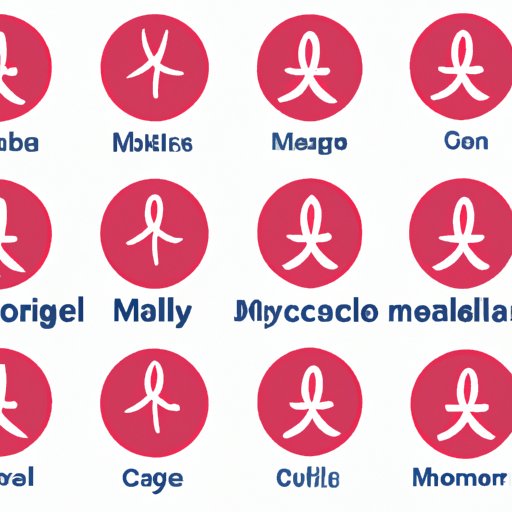
I. Introduction
Multiple myeloma is a type of cancer that affects plasma cells in the bone marrow. These cells produce antibodies that help fight infections, but in multiple myeloma, they grow out of control, causing tumors in the bone marrow and preventing normal blood cell production. In this article, we’ll explore the symptoms of multiple myeloma and their manifestation, with the aim of helping readers recognize them and seek medical attention if necessary.
II. Overview of Multiple Myeloma
Multiple myeloma is a relatively uncommon cancer, accounting for just over 1% of all cancers. It is more common in people over the age of 65 and in men than in women. While the exact cause of multiple myeloma is still unknown, certain risk factors have been identified, including:
- Age
- Family history of multiple myeloma or related conditions
- Being of African descent
- Obesity
- Exposure to radiation or certain chemicals
III. Common Symptoms of Multiple Myeloma
The symptoms of multiple myeloma can vary widely depending on the stage of the disease and where in the body the tumors are located. However, there are some common symptoms that many people with multiple myeloma experience. These include:
- Bone pain and fractures: Multiple myeloma often causes pain in the bones, particularly in the back, ribs, and skull. The bones may become weaker and more prone to fracture, even with minor trauma.
- Fatigue and weakness: As multiple myeloma progresses, it can cause fatigue and weakness. This may be due to anemia, which occurs when the tumor cells interfere with the normal production of red blood cells.
- Recurrent infections: People with multiple myeloma are more susceptible to infections, particularly of the respiratory tract and the skin. This is because the tumor cells interfere with the normal production of white blood cells, which help fight infections.
- Kidney problems: Multiple myeloma can cause damage to the kidneys, leading to symptoms such as swelling, nausea, and the need to urinate frequently. In severe cases, kidney failure can occur.
- Numbness or tingling in the hands or feet: Multiple myeloma can damage the nerves that run to the extremities, causing sensations of numbness, tingling, or burning.
- Anemia: As mentioned earlier, multiple myeloma can cause anemia, which leads to fatigue, weakness, and shortness of breath.
If you are experiencing any of these symptoms, it is important to seek medical attention. While they may be indicative of other conditions as well, it is better to be safe than sorry.
IV. Less Common Symptoms of Multiple Myeloma
In addition to the common symptoms listed above, multiple myeloma can cause other, less frequent symptoms. These include:
- Blood clots: Multiple myeloma can increase the risk of blood clots, which can be dangerous if they travel to the lungs or brain.
- Bleeding problems: Some people with multiple myeloma experience bleeding problems, such as nosebleeds, bruising, or prolonged bleeding from a cut or injury.
- Vision problems: In rare cases, multiple myeloma can cause vision problems such as blurriness or double vision. This may be due to pressure on the optic nerve or damage to the retina.
If you experience any of these less common symptoms, it is important to seek medical attention immediately. While they may be indicative of other conditions or may not be related to multiple myeloma, they can be serious and require prompt treatment.
V. Diagnosis and Treatment of Multiple Myeloma
Diagnosis of multiple myeloma typically involves a combination of blood and urine tests to look for abnormal proteins associated with the disease, as well as imaging tests such as X-rays, CT scans, or MRIs to look for tumors in the bone marrow or other tissues. A bone marrow biopsy may also be performed to confirm the diagnosis.
Treatment for multiple myeloma typically involves a combination of chemotherapy, radiation therapy, and other medications to help manage symptoms and prevent complications. Some people with multiple myeloma may also be eligible for stem cell transplants, in which blood-forming stem cells are harvested from the body and then infused back into the body after high-dose chemotherapy. This can help to re-establish normal blood cell production in the bone marrow.
While there is no cure for multiple myeloma, early detection and prompt treatment can help manage symptoms and improve quality of life. It is important to work closely with your healthcare team to develop a treatment plan that is effective and appropriate for your individual needs.
VI. Conclusion
Multiple myeloma is a serious condition that requires prompt medical attention. By being aware of the symptoms and seeking medical attention if you experience any of them, you can help ensure that you receive an early diagnosis and appropriate treatment. Remember, if you are experiencing any of the symptoms listed above, don’t wait to get help – seek medical attention right away.




